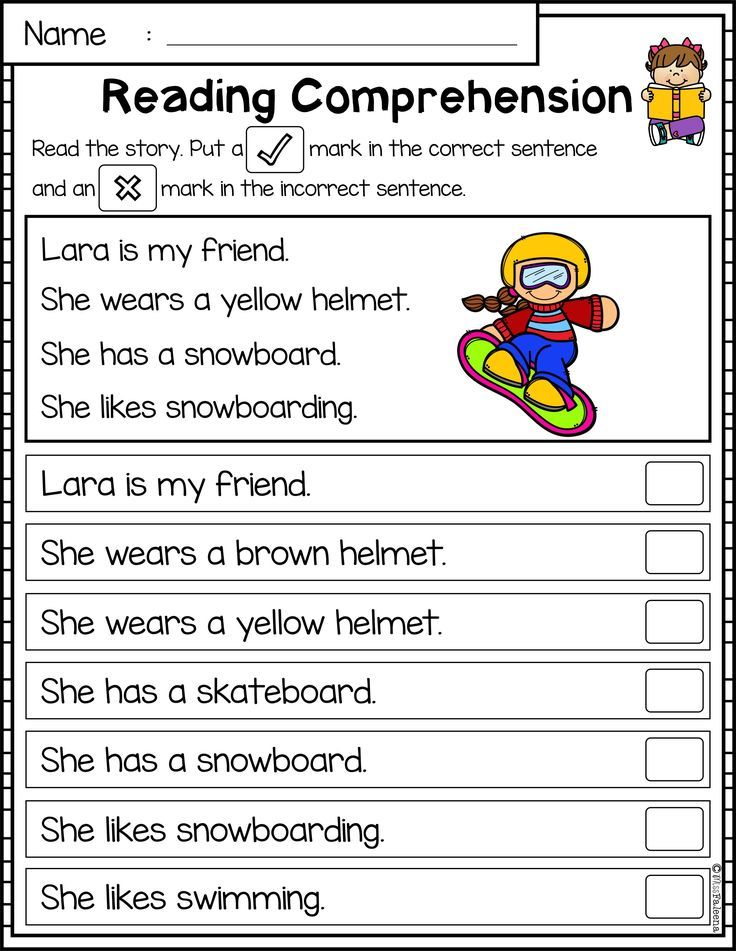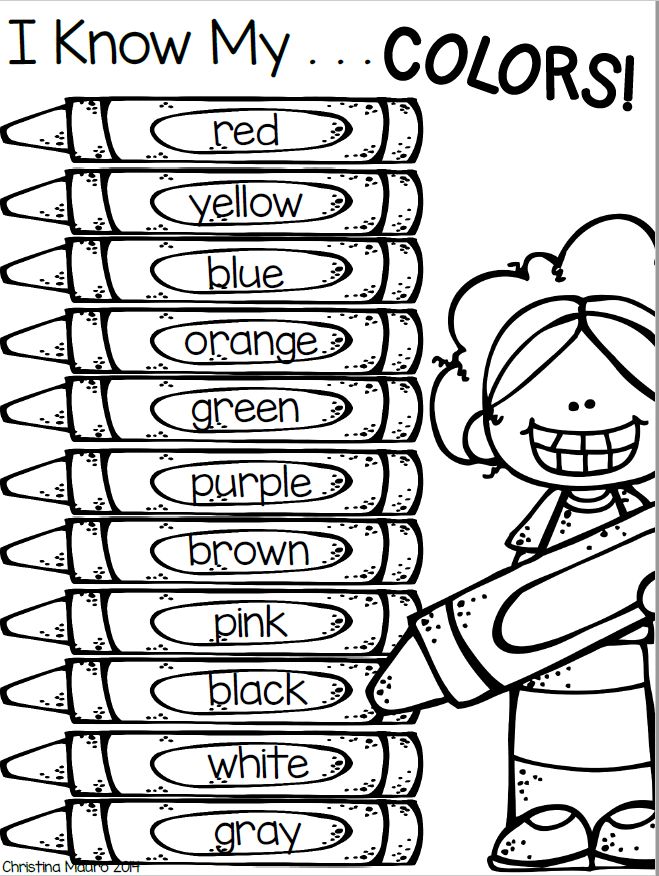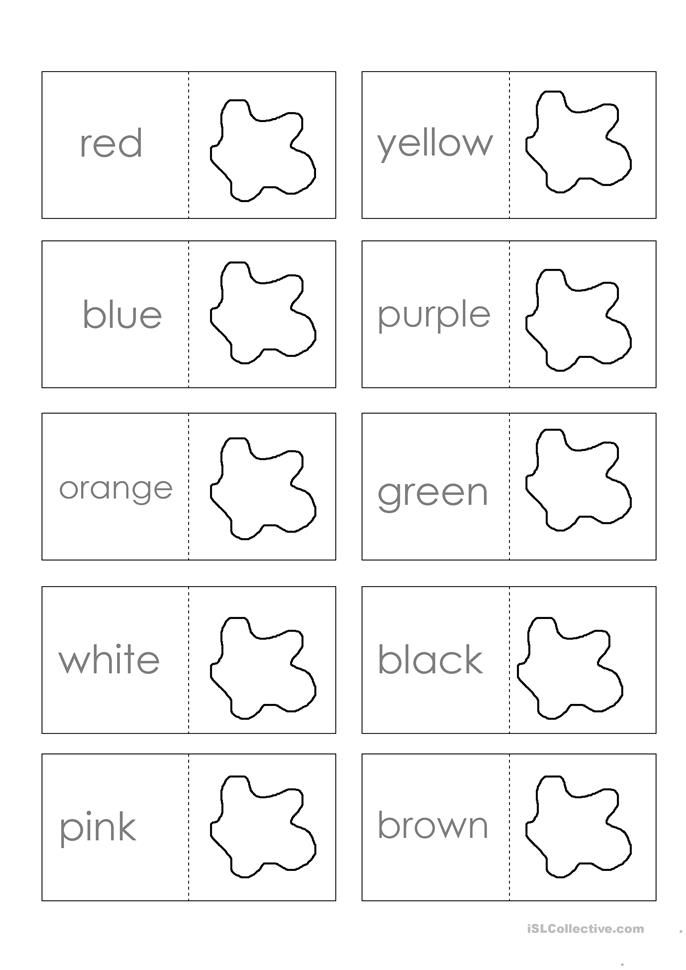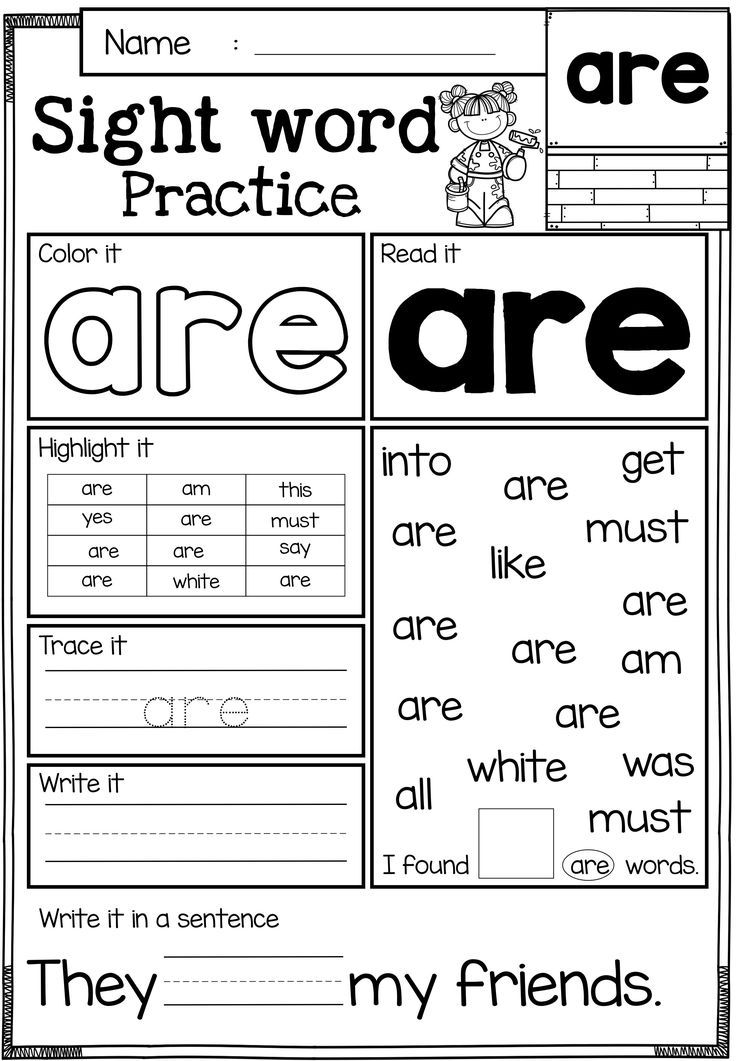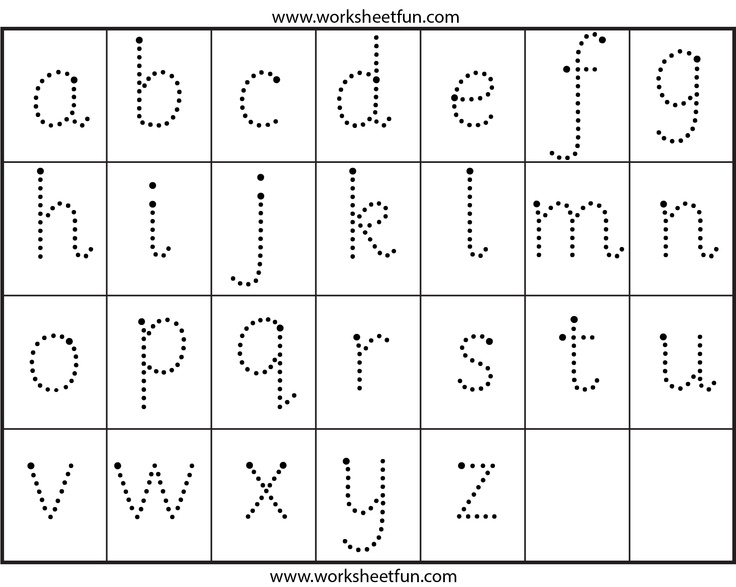Science optical illusion
The science of optical illusions -
Theres an artcle going around the intrnet that pointz outthat wrds don’t have two be speled correctly n order too be understd. With txting and instant messagng, much ov the world becoms en illusion.
Bad grammar and sloppy typing aside, there is something to be said about illusions. They make us think; they make us wonder. They’re important tools in visual research to help us understand how visual processing works in both the normal and the diseased brain. Illusions can offer scientists new insights on how vision and the brain work, and are more than intriguing parlor tricks. Best of all, illusions get the synapses in our brains firing.
Some illusions have been known since antiquity. The scientific study of illusions dates back to the beginning of the nineteenth century when scientists became interested in perception. By carefully altering the stimuli and testing the changes in what a person sees, psychologists try to gain insight into the principles of perception.
An optical illusion is the difference between reality and what the brain thinks it’s seeing. The information gathered by the eye is processed in the brain to give an image that does not agree with a physical measurement of the source. There are three main types: Literal optical illusions create images that are different from the objects that make them. Physiological illusions are the effects on the eyes and brain of excessive stimulation of a specific type (brightness, tilt, color, movement). And cognitive illusions are where the eye and brain make unconscious inferences.
Optical illusions can use color, light and patterns to create images that can be deceptive or misleading to our brain. The information gathered by the eye is processed by the brain, which creates a perception that in reality does not match the true image. Perception refers to the interpretation of what we take in through our eyes. Optical illusions occur because our brain is trying to interpret what we see and make sense of the world around us. Optical illusions simply trick our brains into seeing things that may or may not be real.
Optical illusions simply trick our brains into seeing things that may or may not be real.
Optical illusions appeal to the unknown in us. We cannot accept that what we are viewing is real, yet the experience makes it so. When we experience an illusion, the perceptual error remains compelling even when we are fully aware of its nature. We know the object is not moving, even though our eyes and brain tell us it is. Or we see both two faces and a vase. Which is it supposed to be?
Most optical illusions are not harmful. They are proven to not harm your vision. However, if you stare at one for too long, it may cause eyestrain, sore/tired/itchy eyes, dry or watery eyes, headaches, and more. There also are those who might have adverse reactions to these visual puzzles. To the sensitive, some optical illusions can be dangerous. In a few rare cases, optical illusions may cause epileptic seizures, so be aware of the parameters before staring at illusions.
Optical illusions are an amazing form of art.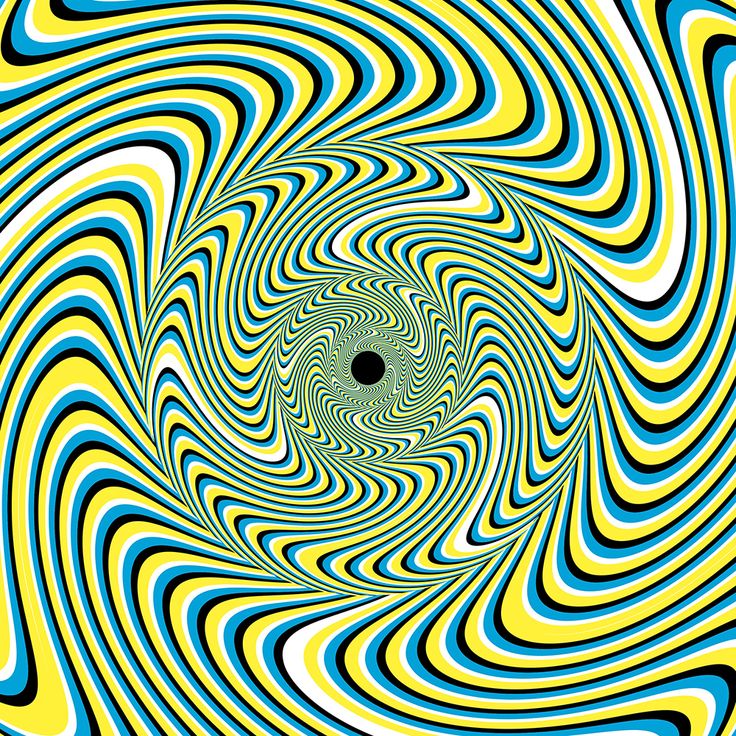 Have fun and don’t get dizzy!
Have fun and don’t get dizzy!
Like this:
Like Loading...
14 Optical Illusions and How They Work - The Science of Perception
The science behind these optical illusions, with examples.
To celebrate CuriOdyssey’s outdoor zoo and outdoor, contact-less science exhibition Illusions opening, we are sharing some of the illusions you’ll see – we recommend using a ruler to check these illusions, they are so good at tricking your brain with the science of perception that you won’t believe your eyes. Curious? Plan your visit or learn about our camps & classes! Or, pick up some at-home science at shop.CuriOdyssey.org.
PONZO ILLUSION – What do you observe about the size of these buses? Psychologist Mario Ponzo suggested in 1911 that the human mind judges an object’s size based on cues in the background. Our brains readily perceive depth, even in flat photos and interpret the size of objects in the photo accordingly. The images of these buses, however, are the same size.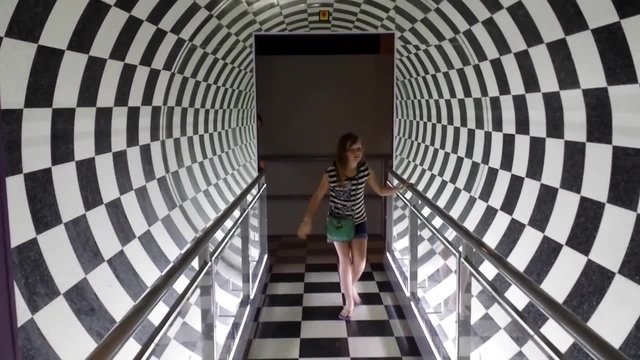 ILLUSORY MOTION – As you gaze at this image, do you perceive any movement? This optical illusion is a static image which appears to be moving due to the cognitive effects of interacting color contrasts, object shapes, and position.ROTATING RINGS – Do you perceive any spinning movement as you look around this image? This illusion is one of many peripheral drift illusions. The perception of motion is caused by the brain’s interpretation of patterns seen outside of the eye’s area of focus. The illusion depends on a repeating pattern of high contrast, light and dark colors.CHECKER SHADOW ILLUSION – Which square is darker gray, 1 or 2? This illusion, originally published by Professor Edward H. Adelson of MIT, illustrates how the brain can be tricked by its complex processing of visual input, perceived lighting conditions and previous experience. 1 and 2 are actually the same gray color.TWISTED CORD ILLUSION – Do you see a spiral, or a series of rings? This optical illusion was first described by psychologist Sir James Fraser in 1908.
ILLUSORY MOTION – As you gaze at this image, do you perceive any movement? This optical illusion is a static image which appears to be moving due to the cognitive effects of interacting color contrasts, object shapes, and position.ROTATING RINGS – Do you perceive any spinning movement as you look around this image? This illusion is one of many peripheral drift illusions. The perception of motion is caused by the brain’s interpretation of patterns seen outside of the eye’s area of focus. The illusion depends on a repeating pattern of high contrast, light and dark colors.CHECKER SHADOW ILLUSION – Which square is darker gray, 1 or 2? This illusion, originally published by Professor Edward H. Adelson of MIT, illustrates how the brain can be tricked by its complex processing of visual input, perceived lighting conditions and previous experience. 1 and 2 are actually the same gray color.TWISTED CORD ILLUSION – Do you see a spiral, or a series of rings? This optical illusion was first described by psychologist Sir James Fraser in 1908.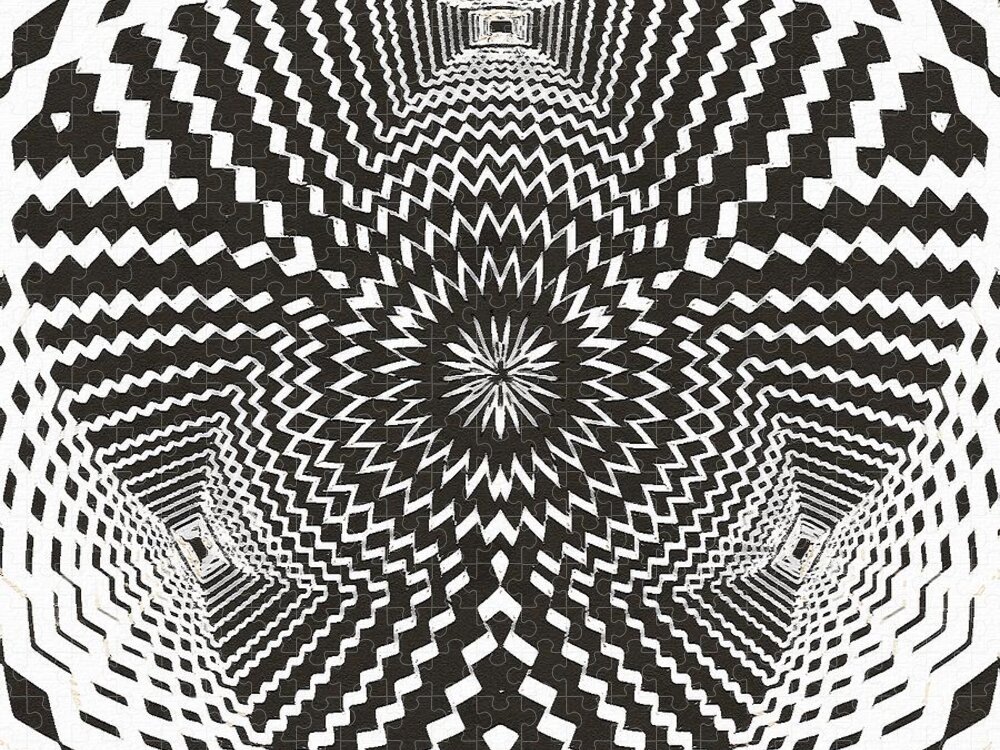 It is sometimes called a “false spiral” because it is actually a set of concentric striped rings.EBBINGHAUS ILLUSION – Which red dot is larger, left or right? This illusion of relative size perception was discovered by psychologist Hermann Ebbinghaus. Your brain makes a comparison of relative size based on the surrounding dots. The red dots in the center are actually the same size.CAFÉ WALL ILLUSION – What do you notice about these rows of squares? In this geometrical optical illusion, the staggered rows of dark and light squares may appear to be sloping or curved, although the lines dividing the rows are actually parallel and straight.SCINTILLATING GRID ILLUSION – Do you see dots at the intersecting lines? If you move your eyes around what do you notice? This optical illusion, discovered by E. and B. Lingelbach and M. Schrauf in 1994, may be the result of a neural process called “lateral inhibition”, though further research is being done to fully understand this illusion.
It is sometimes called a “false spiral” because it is actually a set of concentric striped rings.EBBINGHAUS ILLUSION – Which red dot is larger, left or right? This illusion of relative size perception was discovered by psychologist Hermann Ebbinghaus. Your brain makes a comparison of relative size based on the surrounding dots. The red dots in the center are actually the same size.CAFÉ WALL ILLUSION – What do you notice about these rows of squares? In this geometrical optical illusion, the staggered rows of dark and light squares may appear to be sloping or curved, although the lines dividing the rows are actually parallel and straight.SCINTILLATING GRID ILLUSION – Do you see dots at the intersecting lines? If you move your eyes around what do you notice? This optical illusion, discovered by E. and B. Lingelbach and M. Schrauf in 1994, may be the result of a neural process called “lateral inhibition”, though further research is being done to fully understand this illusion.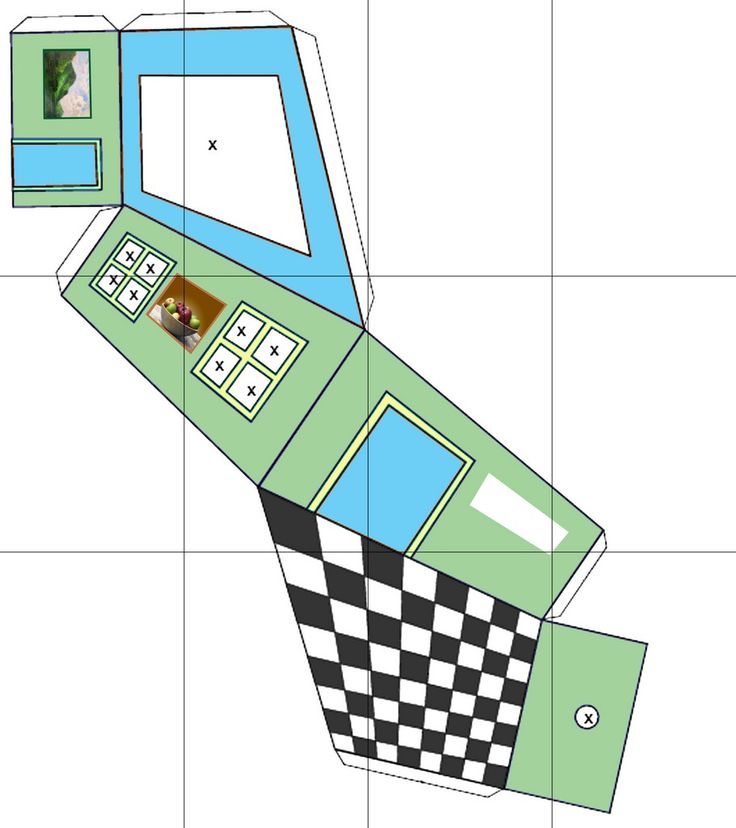 MÜLLER-LYER ILLUSION – What do notice about the relative lengths of the two red lines? The arrowheads and arrowtails alone may affect your perception of the line length. In this image, those lines are extended to create a dimensional drawing of walls, where the red line in the far corner appears to be full wall height, while the closer red line is not. But the red lines are actually the same length.HERING ILLUSION – Do the red lines appear straight or bowed? This geometrical-optical illusion was discovered by physiologist Ewald Hering in 1861. The two lines presented in front of the radial background appear to bow outward, but are actually straight, parallel linesDIVERGENT PERSPECTIVE – Is the bridge tower in the right photo leaning to the right? Our brains have learned that objects receding from view tend to visually converge towards a common point. These two towers in the side-by-side identical photos do not appear to be converging, so our brains perceive them to diverge, with the right one leaning just a bit.
MÜLLER-LYER ILLUSION – What do notice about the relative lengths of the two red lines? The arrowheads and arrowtails alone may affect your perception of the line length. In this image, those lines are extended to create a dimensional drawing of walls, where the red line in the far corner appears to be full wall height, while the closer red line is not. But the red lines are actually the same length.HERING ILLUSION – Do the red lines appear straight or bowed? This geometrical-optical illusion was discovered by physiologist Ewald Hering in 1861. The two lines presented in front of the radial background appear to bow outward, but are actually straight, parallel linesDIVERGENT PERSPECTIVE – Is the bridge tower in the right photo leaning to the right? Our brains have learned that objects receding from view tend to visually converge towards a common point. These two towers in the side-by-side identical photos do not appear to be converging, so our brains perceive them to diverge, with the right one leaning just a bit.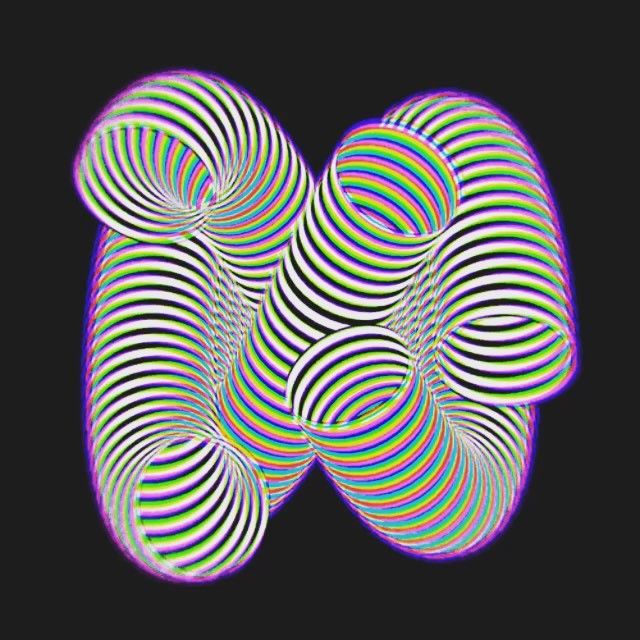 PERIPHERAL DRIFT ILLUSION – What do you notice while gazing at the patterned circle in the center of this image? The apparent lighting source for the grid pattern differs between the center and peripheral areas. A sawtooth luminance grating peripheral to our field of focus is known to generate an illusion of motion as our brain resolves conflicting cues about lighting.BEZOLD EFFECT – What colors are the two eagles? Wilhelm von Bezold discovered that a color may appear different depending on its relation to adjacent colors. These bird silhouettes are the same shade of red, but are intersected with either yellow or blue bars, which changes how we perceive the red color.COLOR CONTEXT ILLUSION – What color are the bobcat’s eyes? The color surrounding an object can affect how the brain perceives the color of that object. Both cat eyes are exactly the same color of gray, but the red color surrounding the left eye, causes us to perceive the eye as light teal.
PERIPHERAL DRIFT ILLUSION – What do you notice while gazing at the patterned circle in the center of this image? The apparent lighting source for the grid pattern differs between the center and peripheral areas. A sawtooth luminance grating peripheral to our field of focus is known to generate an illusion of motion as our brain resolves conflicting cues about lighting.BEZOLD EFFECT – What colors are the two eagles? Wilhelm von Bezold discovered that a color may appear different depending on its relation to adjacent colors. These bird silhouettes are the same shade of red, but are intersected with either yellow or blue bars, which changes how we perceive the red color.COLOR CONTEXT ILLUSION – What color are the bobcat’s eyes? The color surrounding an object can affect how the brain perceives the color of that object. Both cat eyes are exactly the same color of gray, but the red color surrounding the left eye, causes us to perceive the eye as light teal.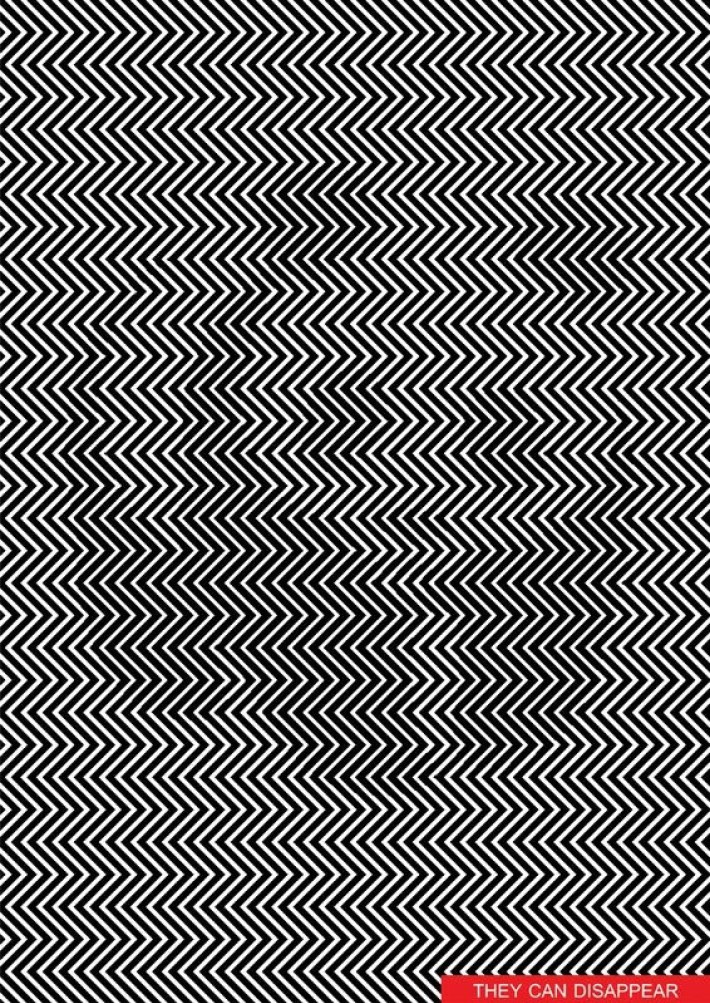
Thanks for your curiosity! Learn more about our offerings:
- At-Home Science Free Resources
- Up-Close Science & Animal Videos
- Live Animal Webcams
- Symbolic Animal Adoptions
- Annual Memberships
Join us online! #CuriOdyssey #iamthezootoday
← Five Fabulous Staycation IdeasKeeping Safe While Out Having Fun →
Science of Optical Illusion - BBC News Russian Service
image caption,
The black and white stripes on the left side of the picture merge more than on the right side...or does it just seem that way?
A beautiful optical illusion can be a lot of fun and bring a lot of scientific benefits.
Optical illusion specialist Bo Lotto deliberately tricks the human brain to figure out how our mind works.
Bo Lotto is not a magician who is obliged to keep professional secrets, so he willingly shared the results of his research with the BBC.
Sight, hearing, taste, smell and touch - we rely on all these senses, and yet there is a saying that it is better to see once than hear a hundred times: we trust the eyes most of all.
Our brain, which constantly processes the information received by all sense organs and compares it with the picture of the surrounding world created on the basis of experience, is also used to such trust.
This ability is an essential feature of human evolution. But in part, it is also our weakness...
Mystery of the jungle
Image caption,Try to find a predator in this photo
Take, for example, color. Why is it sometimes so important to see a color picture? The following two illustrations clearly demonstrate this need.
Try to find a dangerous predator in the first black and white photograph of the jungle, which is about to jump on you.
Did it work? If not, or even if the search took more than a couple of seconds, then you have already been bitten.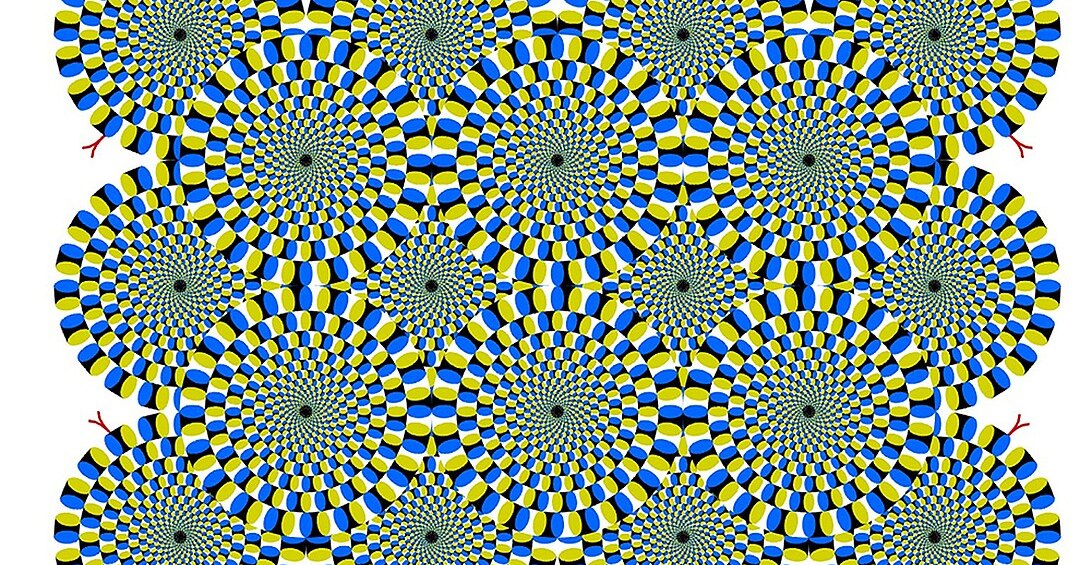
Why does the task look so difficult? Yes, because you see all surfaces only to the extent that they reflect light, there is nothing more for the eye to catch on.
Now look at the same photo, only in color.
Image caption,In color, everything falls into place at once
The panther is well camouflaged in the lower right corner, but you can still see it. And this is due to the fact that you see all the shades of color, and not just evaluate its intensity.
In other words, your brain receives a lot more information, which makes it easier to make decisions.
Color vision allows us to distinguish more similar and different features in the world around us, which at one time was necessary for survival.
The most amazing thing is that when you found a panther in a color picture, you did not even attach importance to how quickly your brain coped with the task, while for computers this still remains an insurmountable obstacle.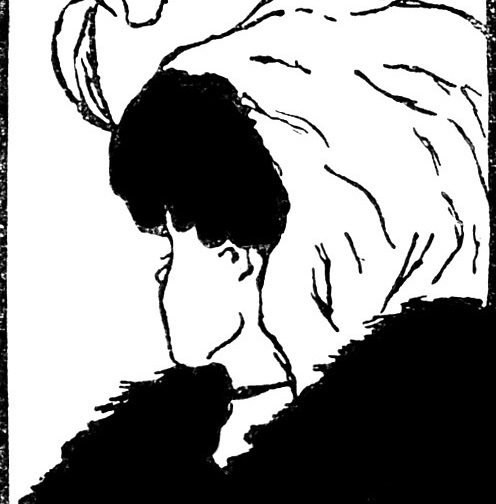
Thus, the study of the effect of optical illusions on the brain helps not only specialists in the field of neurology, but also programmers.
Illusion of contrast
Image caption,The identity of the squares is beyond doubt...
Here you can see two physically identical squares. In fact, they are what they are.
Everything would be very simple if our vision were the direct result of the image displayed on the retina.
However, in reality, the process of creating a visual image is much more complicated. Strictly speaking, what we see is not at all what our eye has physically fixed.
That is, certain initial information is processed by our brain in such a way that the resulting picture differs markedly from objective reality.
For example, the display on the retina is two-dimensional, but the world still has three dimensions.
In addition, the picture on the retina is obtained upside down, as in old cameras, but this does not bother us: the brain from infancy is used to compensating for this omission.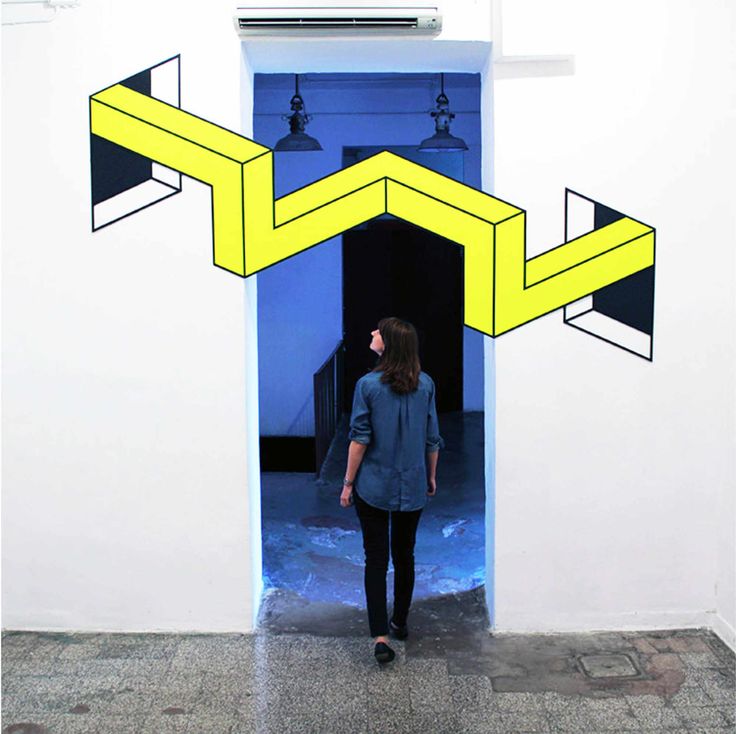
Or is one square lighter than the other?
And now look what happens if you change the background on which the squares are located.
Agree: the squares suddenly began to differ, although nothing happened to them themselves.
A square on a dark background appears lighter than a square on a light background.
This phenomenon is called the illusion of contrast and clearly proves that when it comes to brightness, everything comes down to the context, the environment in which even the simplest subject is viewed.
Cube illusion
Photo caption,Two inserts are indistinguishable in color
In the first picture, you can clearly see that the two inserts are identical in color.
But what happens if we change the context in a special way?
If we are right when we assume that we see only the meaning of the image, then we can easily create a strong optical illusion by changing the meaning of the two inserts.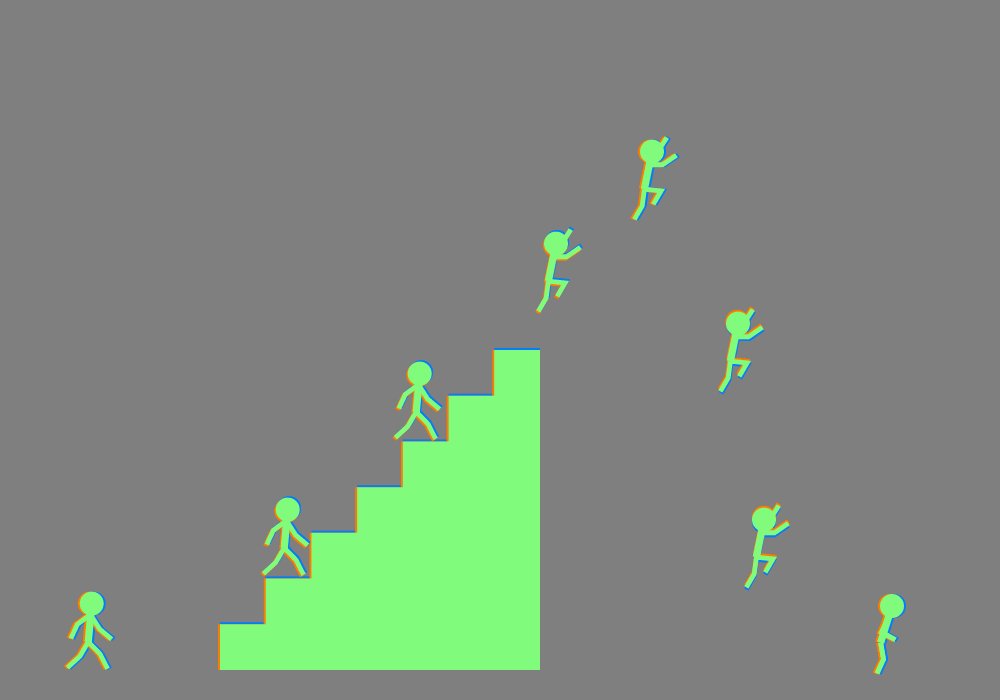
In a new context, two physically identical inserts suddenly start to look different. Precisely to seem, because they themselves have not changed in the slightest.
Why is this happening?
image caption,Or still one yellow insert. is the other brown?
The information in the picture tells us that the dark brown inset on the top indicates a low reflective surface under bright light, while the bright orange inset on the side is a highly reflective surface in shadow.
You perceive these two surfaces differently just because your brain assigns different meanings to them based on information coming from other parts of the picture.
Illusion of a table
Photo caption,Two completely different tables...
Everything that relates to the perception of color also concerns form.
This axiom is true for all objects we observe.
When you look at this image, you are sure you are seeing two tables of different shapes and sizes.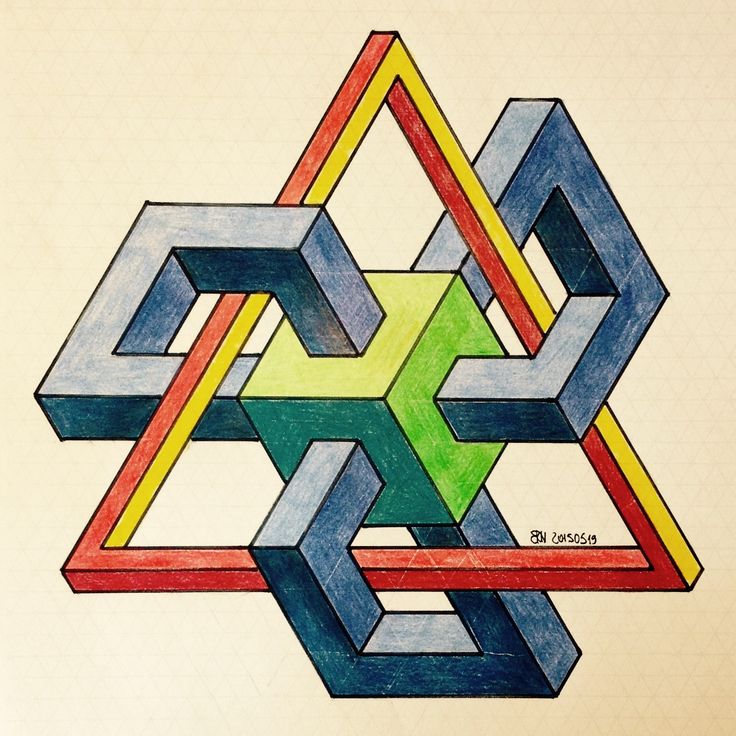
The table on the left looks much longer and narrower than the table on the right.
And now try to believe that the red table is actually the same green one, only rotated by 90 degrees.
The length of the red table is equal to the width of the green one, and vice versa.
Unbelievable, but true. The only difference is at what angle you observe the picture, and also in color, although in this case, believe me, this does not matter.
Image caption,The tables turn out to be the same, though one is red and the other is green, you can't fool anyone... unless you're colorblind?
Why are the two tables so different from each other at a glance?
Yes, because your brain takes a picture from the retina and adjusts it to the information you already have about the tables in general.
In this case, different viewing angles set a certain perspective and depth of vision, and the brain, based on the picture of the surrounding world that has developed in it, automatically concludes that the green table is longer and narrower than the red one.
All this is somewhat frightening, but at the same time it opens up unprecedented perspectives, allowing us to understand that our perception of the illusory world allows us to comprehend the real world.
five illusions that will surprise you - T&P
Most of us are familiar with the phenomenon of optical illusions through entertainment websites, non-fiction books and the work of artists, such as engravings of the famous Maurits Escher. But optical illusions can not only surprise - they help scientists better understand how our sensory perception of the world around us correlates with objective physical reality. The American organization Neural Correlate Society promotes such scientific research: every year it holds a competition where everyone can submit an optical illusion discovered by them with an illustration and a short description. T&P chose five illusions - winners of different years from those published on the contest website and described their effect.
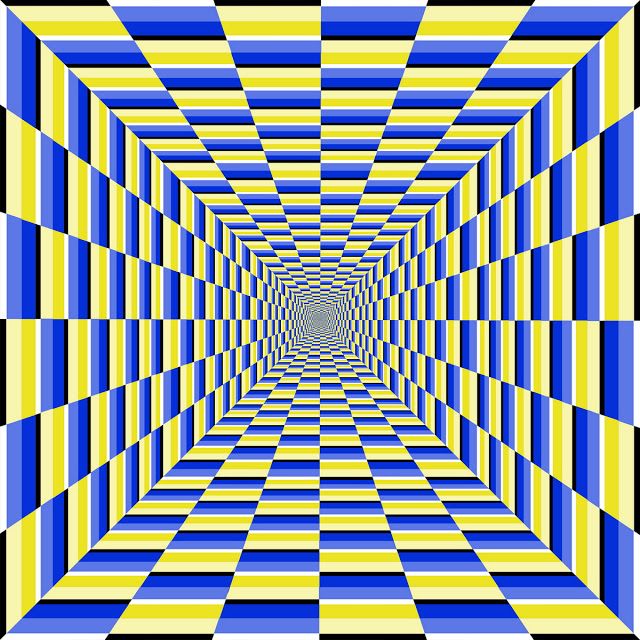
The mechanisms responsible for the occurrence of optical illusions are located in different parts of the human nervous system: from the retina of the eye to the visual zone of the cerebral cortex. An image that hits the retina contains a huge amount of information, and not all of it is transmitted to the brain. Let the numbers speak for themselves: the retina contains an average of 125 million photoreceptors and a hundred times fewer ganglion cells that generate nerve impulses. Our brains have to use abstract models to complete and bring together disparate pieces of incoming visual information. Sometimes he copes with this task too successfully: he forms a sense of wholeness where there is none - in other words, he creates an optical illusion. Using several of them as an example, we will show exactly how our brain misleads us.
Illusion of "impossible movement"
The wooden balls in this video appear to be rolling up the slope as if they were being pulled by a magnet. Their behavior is inexplicable, as it contradicts the laws of physics. The image is not a 3D computer model, just the location of the gutters is perceived by the observer "in reverse" - in such a way that the downward movement of objects along them is taken as upward. Notably, the illusion, created by Kokichi Sugihara at Japan's Meiji Institute for Advanced Study of Mathematical Sciences, uses three-dimensional material objects and physical movement instead of the usual two-dimensional image. In this case, the deceptive effect is achieved by building a certain perspective: it is obvious that if we looked at this construction from any other angle, then the illusion would not work. The material model of the Penrose triangle or the “impossible triangle”, which was invented by young enthusiastic scientists, works according to the same laws. True, in order to be deceived, you will need to make an effort, because the illusion will work "correctly" only if you look at it from a certain point.
"Rotating mask" illusion
Whether we look at the convex or concave side of the mask, we cannot visually distinguish one from the other and will always perceive each of them as a face. As already mentioned, everything we see is the result of electrical signals transmitted from the eye to the brain along the optic nerve. It is the brain that processes these signals and constructs a certain image that our consciousness can perceive. Moreover, neuroscientists believe that there are certain areas in our brain responsible for face recognition. From our experience, we know that faces are convex, and the brain produces an image that matches our expectations and established patterns. The habit is so strong that even the three-dimensional model of reality that is created by our stereoscopic vision is ignored. Interestingly, people suffering from schizophrenia cannot be deceived and are able to visually recognize the concave side of the mask. Raw visual information in their case is not "rewritten" by higher cognitive processes occurring in the brain. Some psychologists believe that such a dysfunction in signal processing (when sensory perception dominates consciousness) increases in patients a sense of dissociation from reality.
Falling tower illusion
Despite its apparent simplicity, the effect of this illusion was first described in 2007 by scientists at McGill University in Canada. The two images of the Leaning Tower of Pisa are identical, but the observer gets the strong impression that the right tower is tilted more, as if it were photographed from a different angle. The fact is that adjacent photographs are perceived by us as one image. Usually, due to the laws of perspective taken into account by our visual system, the contours of two adjacent towers converge towards the same point as they move away from the field of view. But if their contours are parallel, our brain assumes that the towers should diverge in different directions. The main discovery of scientists was the fact that our visual system treats two identical images as a single landscape: no matter how hard we try to perceive them separately, we will always see the "Twin Towers of Pisa", whose perspective can only be explained by the fact that the slope of one much more of the towers.
Dynamic Ebbinghaus effect
The geometric Ebbinghaus illusion is possible due to our perception of relationships between the sizes of objects. A person of average height will appear taller or shorter depending on whether he is standing next to a professional basketball player or a hobbit. So the central circle will appear larger or smaller depending on the size of the objects surrounding it. This phenomenon can be explained as follows: our perception adjusts to a certain relationship between an object and its environment and extracts from it a certain criterion, which is then transferred to a new situation. For simplicity, this can be compared to the perception of sounds: if your laptop suddenly stops buzzing, you are instantly aware of the silence in the room, although before that you might not have paid attention to the noise it makes. In the classic Ebbinghaus illusion, objects are static, but it turns out that the visual effect is greatly enhanced in dynamics: according to the scientists at the University of Nevada, the authors of the illusion, the error in size perception is almost doubled.
Multisensory Disappearing Hand Illusion
Originally conceived by scientists at the University of Nottingham as a simulation of sensory loss in stroke patients, this illusion uses sight, touch and body position. The participant of the experiment does not notice how his perception of the position of his own hands gradually changes: after special manipulations programmed by scientists, the hands are much further apart than it seems to the subject.


